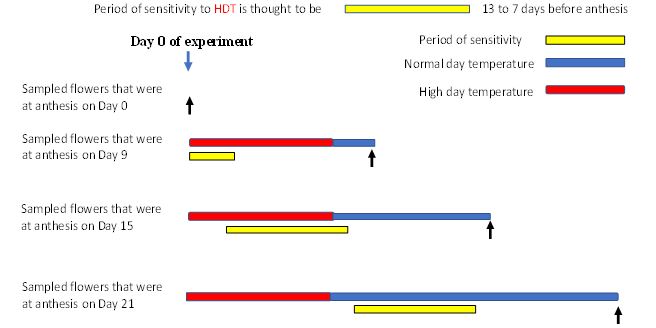Please click here to access the main AHDB website and other sectors.
- Home
- Knowledge library
- Fruit set and pollen viability
Fruit set and pollen viability
Read about what fruit set is and the factors that influence pollen viability.
Fruit set
The term ‘fruit set’ requires definition. It is used here to denote flowers which reach anthesis (flower opening) normally and subsequently produce fruit of marketable size for that tomato type / cultivar.
Very little research has been published on flowering and fruit set in tomato since the introduction of commercial bumblebees for pollination. The biological system had been very reliable and, until recently, tomato growers had very few issues with fruit set. As a consequence, most of the available literature is pre-1985 and therefore relates to old cultivars which are no longer grown.
Pollen viability
The extent of fertilisation (i.e. the number of fertilised ovules per ovary) is dependent on the number of viable pollen grains reaching the stigma and the effect of environmental or physiological factors on the subsequent processes of pollination and fertilisation (Picken, 1984).
Our experiments have indicated that the anthers of an individual tomato flower from cv Piccolo were generally able to produce many more pollen grains than were needed to fertilise all the ovules in the ovary of the same flower (PE031a report). However, it is possible that not all of those pollen grains were viable. If true, this could be contributing to the problem of failed set in this cultivar. It is possible that poor pollen viability could be a genetic trait and/or an effect of adverse environmental conditions.
Effect of temperature
It is generally accepted that high temperatures (c.30oC) will reduce fruit set in most tomato cultivars (e.g. Picken, 1984; Paupière et al., 2017). A contributory factor may be that high temperature reduces pollen production and possibly pollen viability.
The results of experiments by Sato et al. (2002) suggested that high temperature had its greatest effect between about 13 days and 7 days before anthesis, with the most sensitive period occurring about nine days before anthesis when the pollen mother cells are at meiosis: i.e. the process of cell division that results in the creation of the pollen grains.
The effect of temperature on the viability of pollen of cv Piccolo and other modern small fruit varieties was not known.
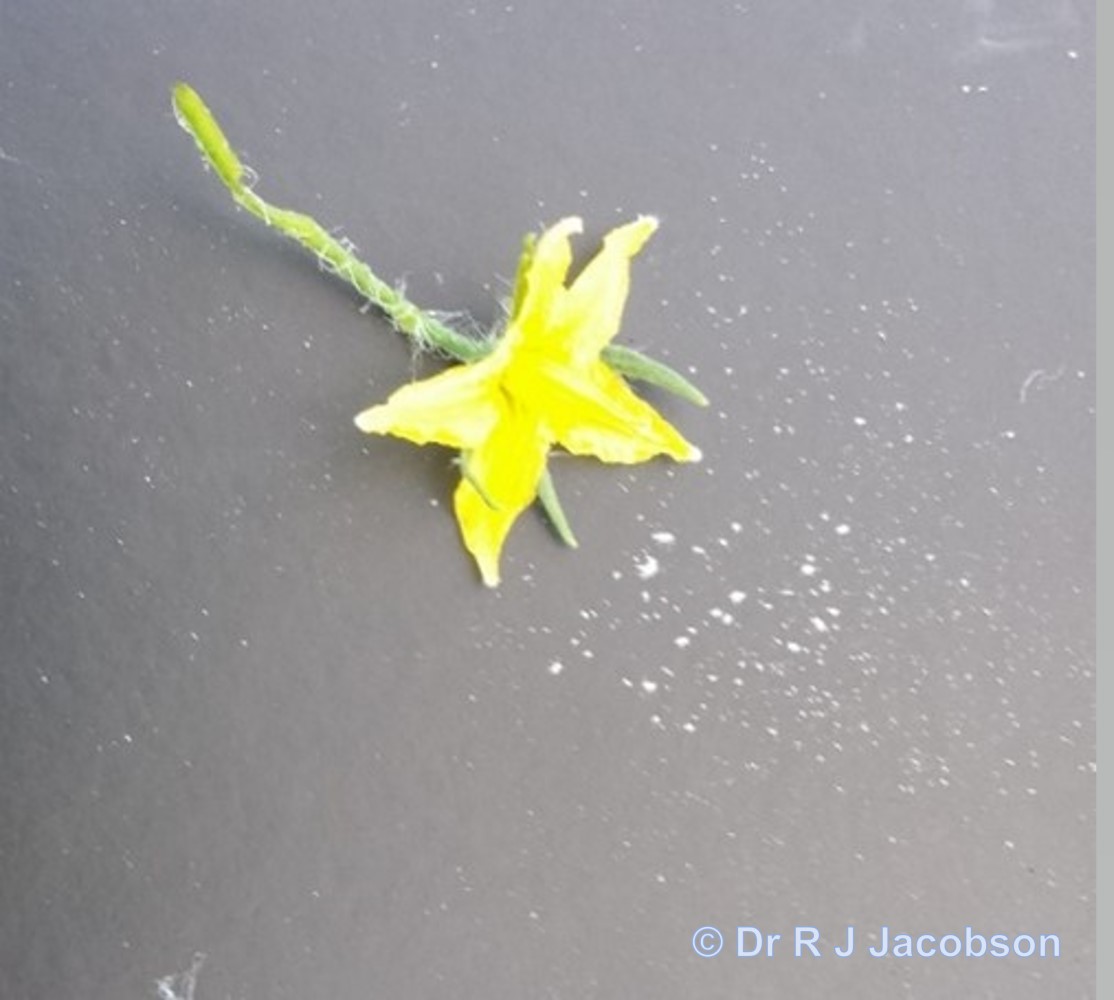 Dr R J Jacobson
Dr R J Jacobson
Pollen flowing from the flower of a classic round tomato. © Dr R J Jacobson.
Methods of determining pollen viability
One of the aims of this project is to develop a workable method for quantifying pollen viability to enable the effects of high temperature on cv Piccolo to be quantified.
Several methods of assessing pollen viability reported in the historic scientific literature were tested in this project in 2019, but none resulted in successful pollen germination with modern tomato cultivars. Three additional methods were refined and tested in 2020. They were based on either the use of solid germination media (originally described by Karapanos et al. (2006)) or two variations on the use of liquid media (Pressman et al. (2002); Paupiere et al. (2017)). (PE 031b report).
Using liquid media
Significant progress was made in the refinement of the methods using liquid media and this led to a reliable means of measuring pollen germination and quantifying pollen viability in modern small fruiting tomato cultivars such as cv Piccolo.
There was no noticeable difference between the two liquid media tested and both were successful; pollen grains could be observed after 6h incubation and staining with Alexander dye showed viable pollen grains (stained purple), viable and germinating pollen grains (stained purple with visible germ tube) and non-viable pollen grains (stained green). An increased number of pollen grains with longer germ tubes were observed after a further 18h incubation (total of 24h). Using liquid media had the added benefit of minimising any loss of viability of pollen grains after collection as the samples could be collected directly from the flower to the germination media.
Effect of temperature on tomato pollen production and viability
Two experiments were done in sequence during 2021, each in two fan-ventilated air conditioned glasshouses at Warwick Crop Centre. In each experiment, there were two temperature regimes. The main treatment (HDT) was a high day temperature of 32OC maintained for 12 hours per day followed by a night temperature of 18OC. This was compared to a control with day:night temperature maintained at 20 OC:18OC.
Within each regime, responses in pollen production / viability were recorded in cv Piccolo and compared to cv Duelle (a baby plum tomato) and cv Milandro (a classic round tomato). All flowers were self-pollinated manually, using an ‘electric bee’, except on the day of, and the day before, sampling for assessment of pollen quantity / quality. The timings of these assessments were carefully planned to provide data from flowers that reached anthesis at critical times in relation to the HDT (Figure 1).
Trusses on some plants of each cultivar from each treatment were grown on to produce fruits for seed counts.
Figure 1. Times of sampling in relation to the high temperature regime.
Summary of key results
At the start of this project, it was not clear whether poor fruit set, which resulted when Bta was used to pollinate tomato crops during hot weather, was due to the effect of temperature on plants, on bumblebees or an interaction between the two. The following findings in these experiments have greatly improved our understanding of the problem:
- The data from the start of the experiments, when flowers had not been exposed to the HDT, showed that all three cultivars produced many more viable pollen grains than were required to fertilise all the ovules in the ovaries of their flowers. No differences were recorded between the HDT and control temperature regimes at that stage.
- Similarly, there was little or no effect on flowers that reached anthesis on day 21. Figure 1 shows that the anticipated sensitive period for these flowers occurred after the HDT.
- However, flowers that reached anthesis on day 9 showed a significant reduction in the numbers of seeds per fruit. This effect was amplified in the results from the flowers that reached anthesis on day 15, which showed a dramatic reduction in the number of seeds per fruit leading to the abscission of fruits in all three cultivars (eg Figure 2). The flowers sampled on day 9 and day 15 had both experienced the HDT for some days between 13 and 7 days before anthesis (2 days and 6 days respectively).
- The effect of the HDT on seed count appeared to be due to an effect on pollen production rather than an effect on pollen viability, or the combined pollen viability index, as pollen viability was relatively high whenever samples were taken.
Conclusions
- A high temperature event reduces pollen production in flowers that are forming pollen grains at that time. This results in poor fruit set from those flowers 7-13 days after the event regardless of the activity of bumblebees. This was an extreme temperature difference but considered necessary as a ‘proof of concept’. Further studies are required to determine the precise temperature thresholds and durations for different types / cultivars of tomato.
- The effect of the HDT on seed count was due to reduced pollen production rather than pollen viability.
- The data strongly suggest that these responses to high day temperatures are likely to become a more serious problem if the present rate of climate change is sustained.
- These results do not preclude the possibility that the problems with fruit set that are encountered in summer in the UK are caused by, or exacerbated by, the bumblebees that are currently used to pollinate tomato crops as those failings happen at temperatures below those tested in these experiments.
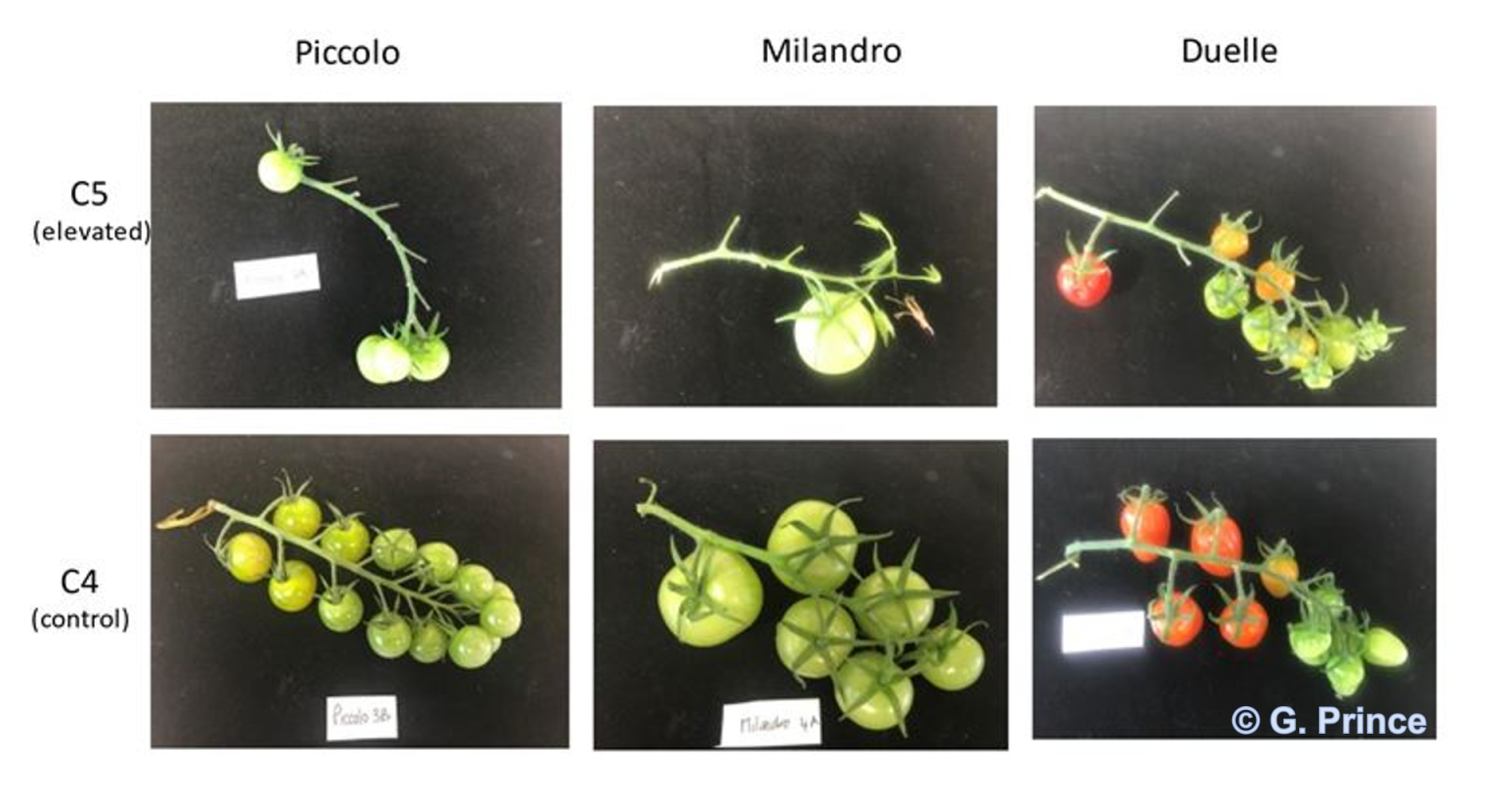
Figure 2. Examples of trusses from all three cultivars in both treatments. Trusses in C5 had been subjected to the high temperature event during the flowers’ period of sensitivity.
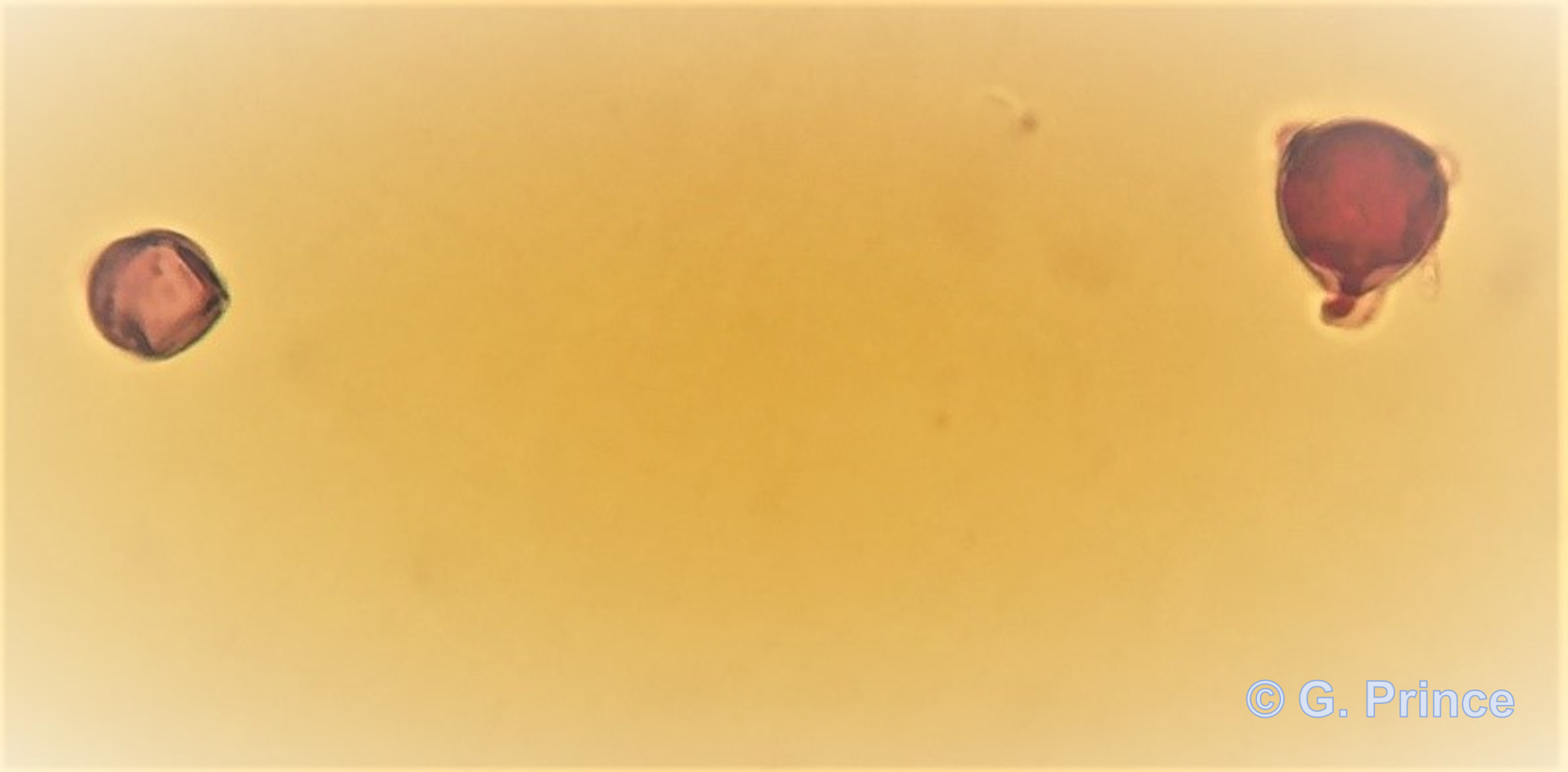 G. Prince
G. Prince
Viable pollen grains (stained purple) after 6h incubation in liquid media. © G. Prince.
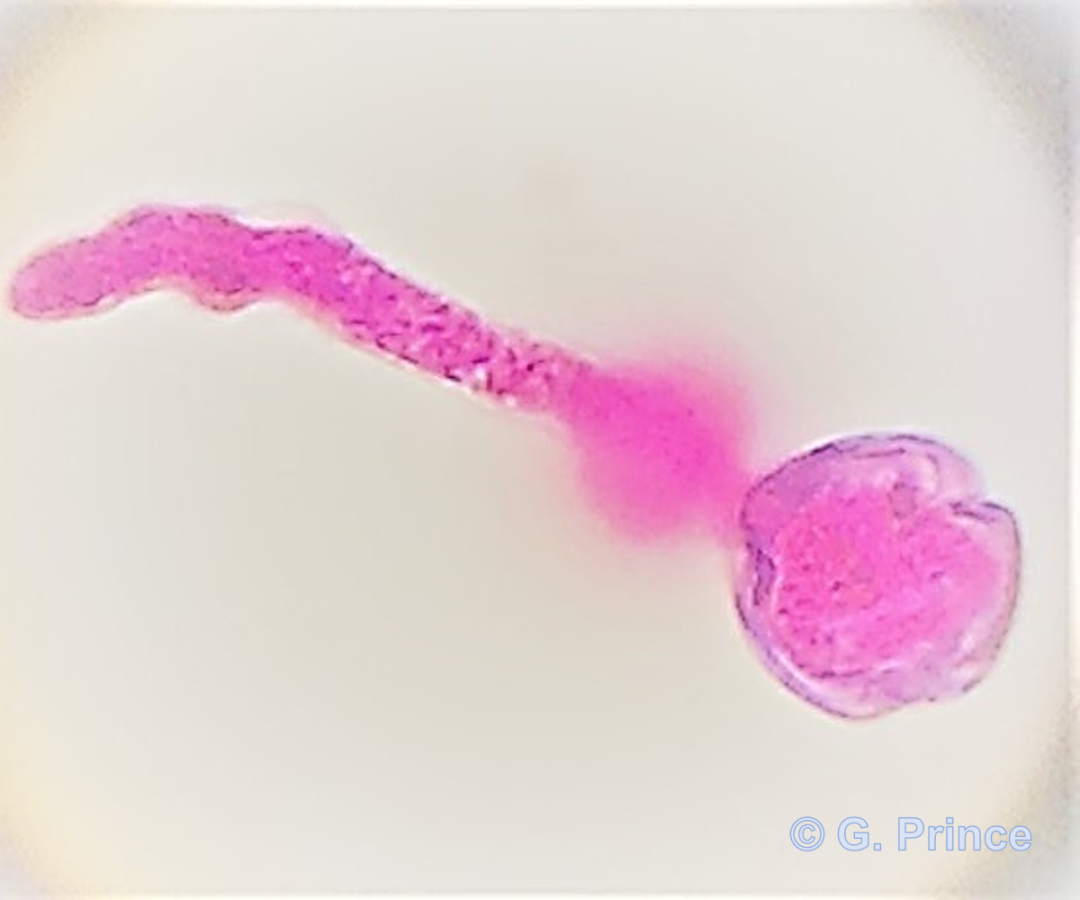 G. Prince
G. Prince
Viable and germinating pollen grains (stained purple with visible germ tube). © G. Prince.
 G. Prince
G. Prince
Non-viable pollen grains (stained green) after 6h incubation in liquid media. © G. Prince.
Useful links
Got a question? Ask a member of the team
Author
The content on this page was authored for AHDB by Dr K Cockshull, Mrs G Prince and Dr Rob Jacobson (Rob Jacobson Consultancy Ltd).


